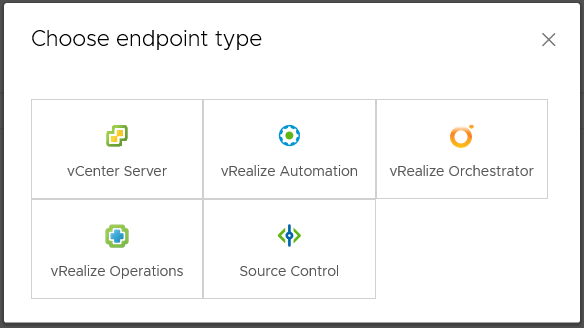vRealize Lifecycle Manager (LCM) is the first component installed by vRA 8’s unified “Easy Installer”. One of its primary functions is the deployment of VMware’s vRealize products. As mentioned in my Installation post, a link to the LCM UI appears towards the end of the installation process. The Dashboard of LCM has five items: Lifecycle Operations, Locker, User Management, Content Management and Marketplace
Lifecycle Operations
By logging into this UI, it’s possible to see some of the activity that happened during the installation process. This activity includes the creation of Environments and a Datacenter object.
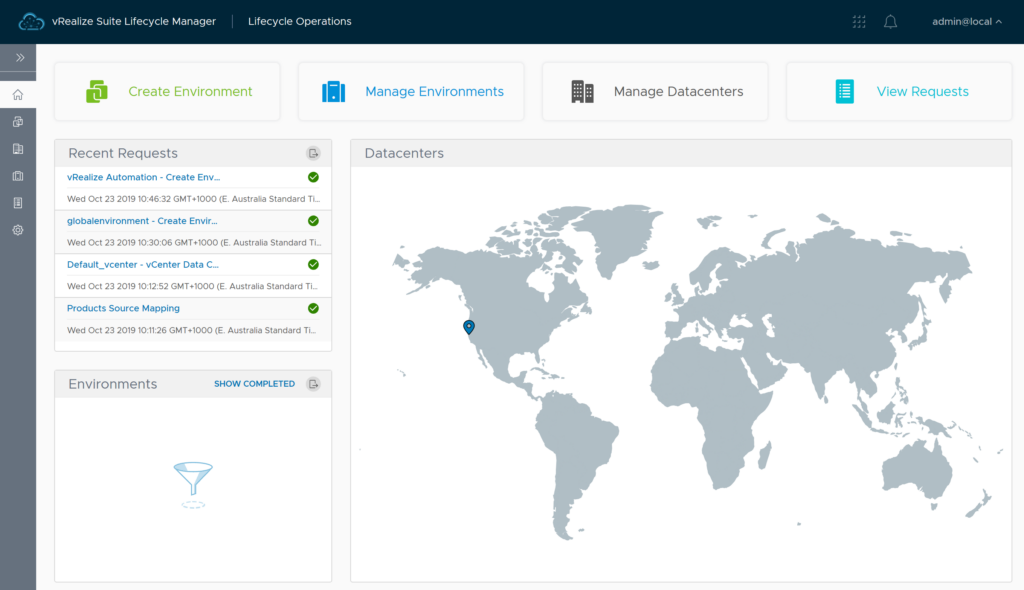
As shown in the screenshot above, the Datacenter location defaults to Palo Alto in California. A single Datacenter object is created during the setup, called “Default_datacenter”, with an associated vCenter instance of named “Default_vcenter”, using the details supplied during the Easy Install Wizard. The setup process will create two Environments – a “globaldefault” environment which contains Identiy Manager and a “vRealize Automation” environment that contains the vRA application.
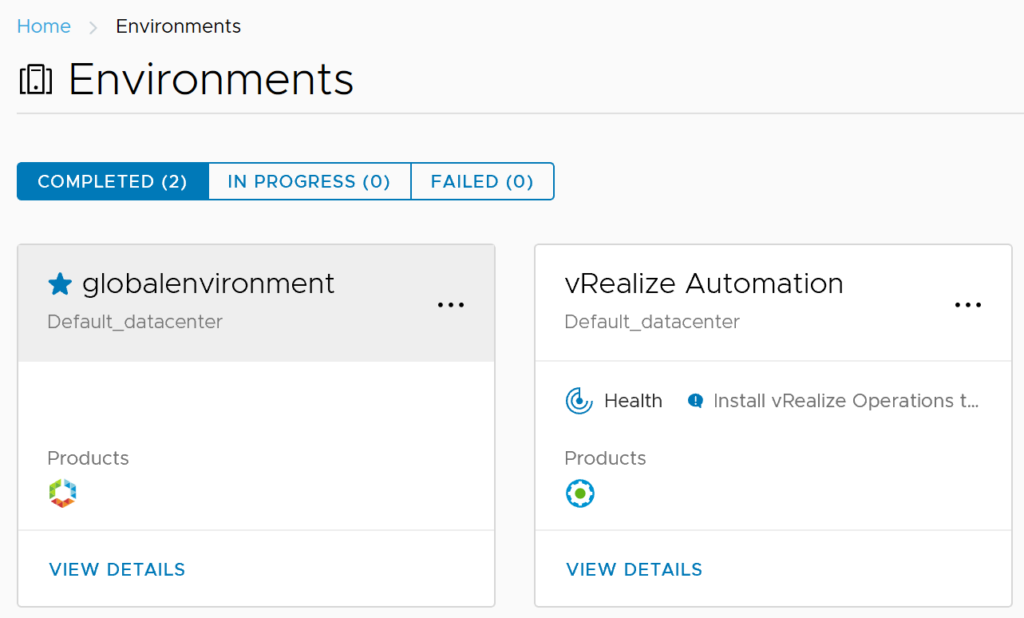
Drilling down into an Environment will expose more information about the individual Products assigned to each, such as network settings, infrastructure, etc. Administrative tasks can also be initiated in this area.
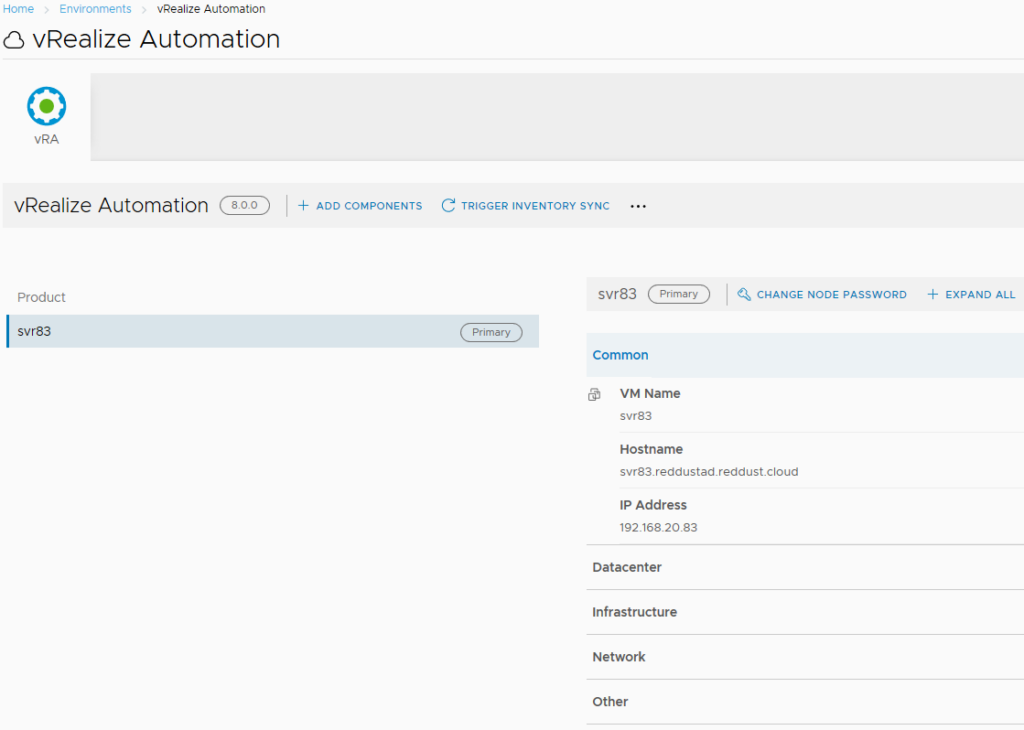
The Settings area has some items of note. A Proxy server can be configured and includes details of what hostnames to whitelist.
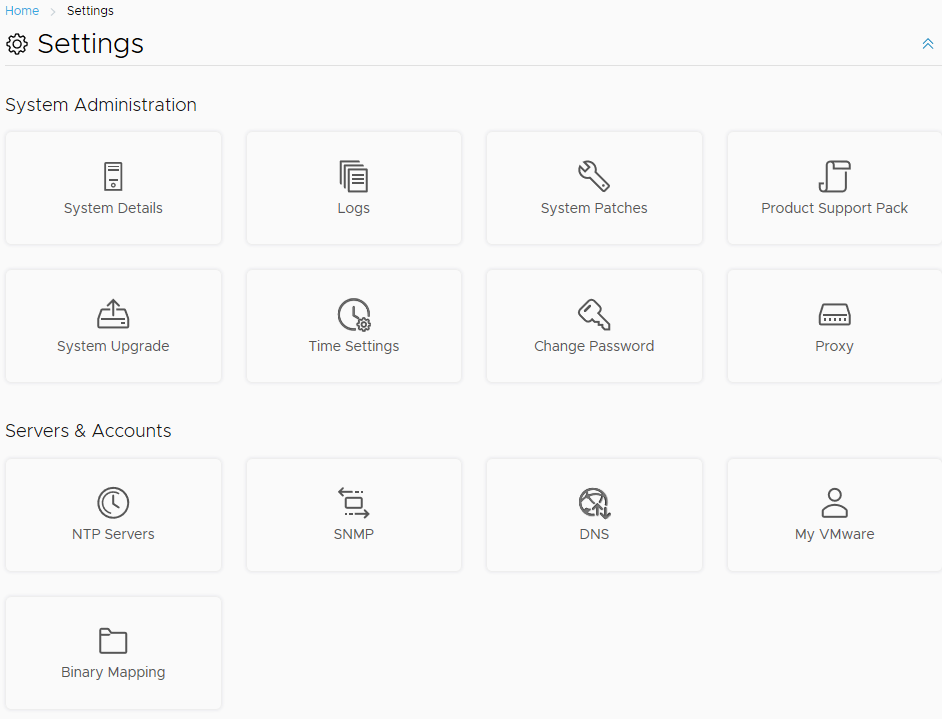
The “My VMware” item is used to link Lifecycle Manager to a VMware account for licenses, product downloads and show content in the Marketplace.
Locker
The Locker appears to act as a sort of secrets management area, with three sections: Certificate, License and Password. In Certificate, certificates can be generated, imported or a CSR generated. The License section allows the storing of product licenses. Password allows the management of stored passwords. Many of the UI elements in LCM won’t allow free text entry for passwords. Instead a dropdown of the password objects created in this Passwords area is used.
Directory Management
In the Directory Management area, it’s possible to add an Active Directory to act as an authentication source. The experience of doing this is very similar to vRA 7 and is the same if the directory is added via the Identity Management appliance. The other section in Directory Management is Users, where it’s possible to assign users or groups to roles within LCM.

Content Management
The Content Management area is for defining the items and structured used for the CI/CD style model VMware has created for moving content. The first item in this area is Endpoints. Out of the box, there are no Endpoints defined.
To be able to add some of these Endpoints, there needs to be items in the Content Settings area. For example, to add a Source Control Endpoint, a Source Control Server needs to be added under Content Settings. Content Settings is where a vSphere Template Repository would be defined, which is a prerequisite to adding the vCenter Server Endpoint.
Marketplace
The Marketplace exposes a lot of the content available on VMware’s Solution Exchange site, within LCM. At the time of writing, there was 329 items. In terms of vendor breakdown there were:
- 156 from Bitnami
- 44 from Blue Medora
- 107 from VMware
The content covers items for vRealize Automation (blueprints and virtual appliances), vRealize Log Insight, vRealize Orchestrator (plugins and workflows) and vRealize Operations Manager. Items can be downloaded and deployed via the Marketplace interface.
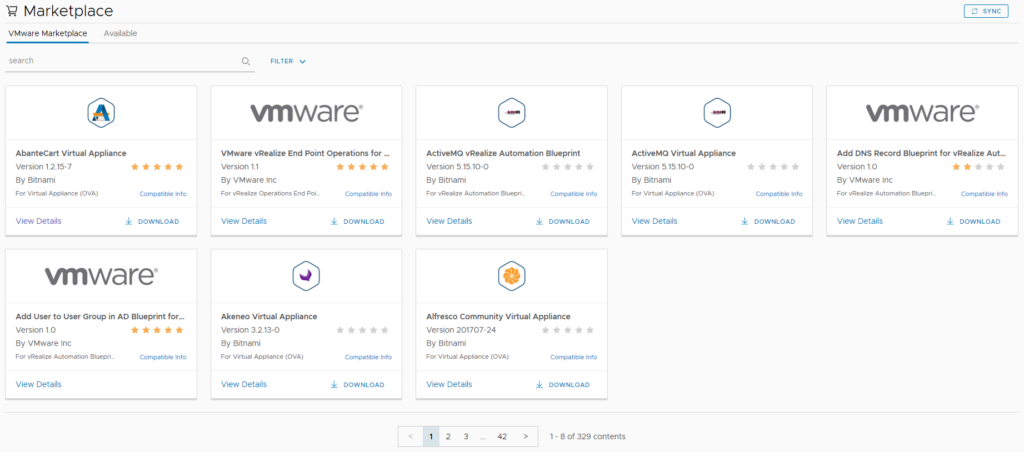
The Marketplace opens a whole new avenue of new applications that can be quickly deployed.
Closing Thoughts
I’ve had a brief look at earlier versions of Lifecycle Manager in the past, specifically version 1.2 and it’s clear that the product has matured. One item about the automated configuration that may annoy some is that it doesn’t seem to be possible to edit the location of the default Datacenter object that’s created. Apart from that, the product seems like a good progression from past versions.
